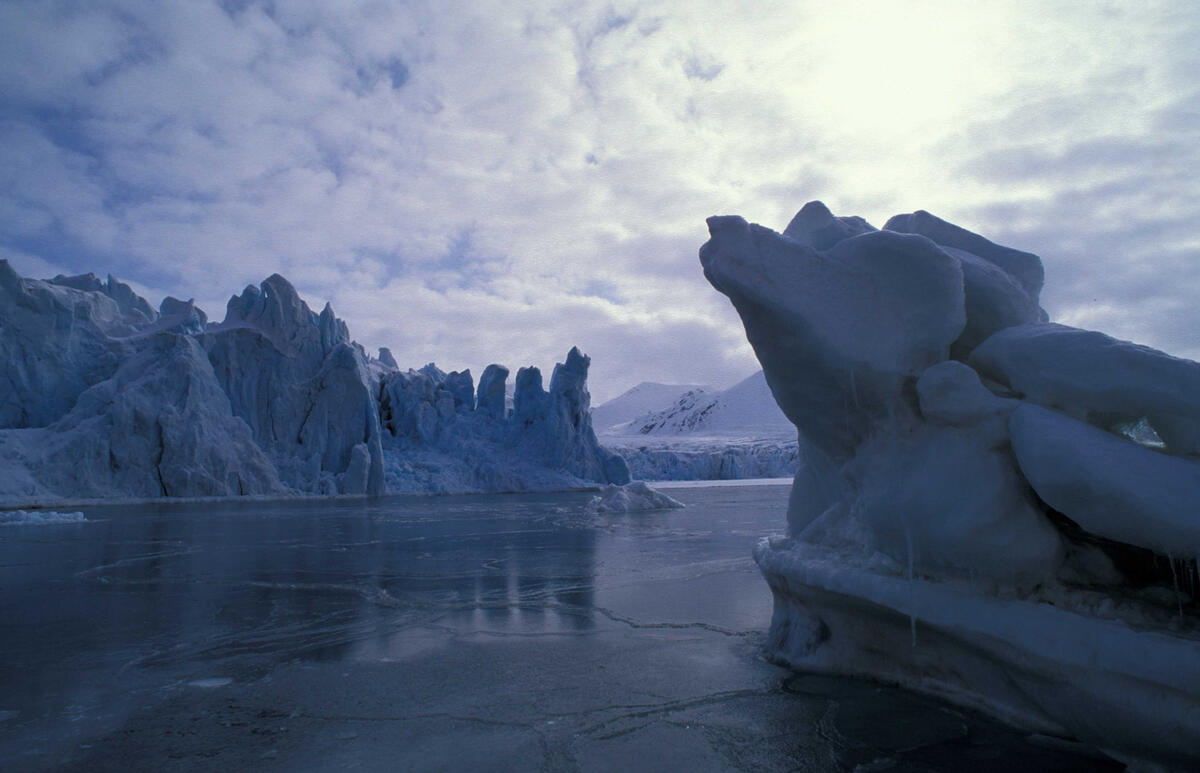Types of glaciers
In Svalbard, there are several types of glaciers. The largest are called ice caps. These are preferentially found in the eastern part of the archipelago. The biggest ice cap is Austfonna on Nordaustlandet, with a total area of 8120 km2 and a volume of around 1900 km3. Austfonna and Vatnajökull in Iceland are the biggest ice caps in the world. Only the significantly larger ice sheets in Greenland and Antarctica surpass Austfonna and Vatnajökull in size. Spitsbergen is dominated by another type of glacier, fittingly called the Spitsbergen type. These are large contiguous ice masses divided into a multitude of smaller streams of ice and termini by mountain ridges and nunataks. This type of glacier is particularly common in the southern and northwestern parts of Spitsbergen. Many of them reach the ocean, where they calve. In central Spitsbergen, most of the glaciers are small, filling only parts of their valleys. They are called valley or cirque glaciers. Longyearbreen and Larsbreen south of Longyearbyen are examples of valley glaciers.
- 1/1
Von Post and Tuna glaciers. Photo: Ian Gjertz
How old are the glaciers?
Over the past 4000–5000 years, Earth has cooled markedly, gradually providing more favourable conditions for expansion of glaciers and permafrost. If we go back 5000 years, the average temperature in Svalbard was about 4°C warmer than at present. Then it was probably necessary to climb 200–400 metres up into the mountains to find permafrost, and many of the glaciers we see today probably did not exist. The largest of today’s glaciers would have been present, but much smaller. This means that many of Svalbard’s glaciers are less than 3000–4000 years old. The climatic cooling explains a truly unique feature in a glacier just two kilometres from Longyearbyen. In winter, it is possible to descend through an ice cave to the base of the glacier for an unusual experience. The ice cave is special because it contains remnants of plants from the time when the glacier was formed. Dating has revealed that the plants were covered by the glacier 1100 years ago. Obviously the glacier has not grown constantly for 1100 years: at times, glaciers also lose volume, as they are doing today.
- 1/1
A glacier calving. Photo: Guri Dahl


